1. Panel
1.1. PMI adopting linked data for BI
1.1.1. data cleanup
1.1.1.1. tolerates dirty data
1.1.2. disambiguation
1.1.3. facilitates mashups
1.1.4. handles disparate datasets
1.2. What architectures and patterns are best for enterprise use
1.3. Practical experiences
1.4. Tools
2. Business Case
2.1. 1. Disambiguation
2.1.1. Data audit
2.1.2. Speaking a common language
2.1.3. Make data more precise
2.2. 2. Centralisation
2.2.1. Answering questions from across this institution
2.2.2. Cost of getting/keeping data clean?
2.3. 3. Inferencing
2.4. Others?
2.4.1. Big data?
2.4.2. Data cleanup
3. Bookmarks
3.1. http://groups.diigo.com/group/linked-data
3.2. http://groups.diigo.com/group/ontology-examples
3.3. http://groups.diigo.com/group/education-ontologies
4. ResearchRevealed
4.1. Browse and Discovery across Research Silos
4.2. Data Sources
4.2.1. Partners
4.2.2. Publishers
4.2.3. Funding Councils
4.2.4. Finance
4.2.5. Central System
4.2.6. Personal Website
4.3. Web of Data
4.3.1. RDF
4.3.2. RDFa
4.3.2.1. Add attributes to (X)HTML
4.3.2.2. 1.1
4.3.2.2.1. HTML5
4.3.2.2.2. Simple vocabularies
4.3.3. SPARQL
4.3.4. Semantic Web/Linked Data
4.3.5. Open Graph?
4.4. Steps
4.4.1. Publishing
4.4.1.1. unfamiliar format
4.4.1.2. content negotiation
4.4.1.3. exotic redirects
4.5. Governance?
5. Making Data Work
5.1. New technologies can't do everything
5.2. It's about solving problems not technology
5.3. Examples
5.3.1. Powerset
5.3.2. www.tripit.com
5.3.3. Siri
5.3.4. True Knowledge
5.3.5. metaweb/freebase
5.3.6. Disambiguation on the fly
6. Scenarios from Southampton
6.1. www.semhe.org
6.2. Subject related questions
6.3. Expert/Research Data
6.4. Tutoring/Attendance Monitoring
6.5. Building/Room Location
6.6. 'VLE' as Mashup
6.6.1. Modules
6.6.2. Resources
6.6.3. Assignments
6.6.4. Bookmarks
6.6.5. Emails
7. Why
7.1. Data Syntax = Mainly Works
7.2. Transport = Nearly There
7.3. Semantics = Problem
7.4. Reconcile Local and Global
7.4.1. How does this fit with a Single Point of Truth?
7.4.1.1. Aliases
7.5. Drivers
7.5.1. Business Intelligence
7.5.1.1. 1. Finance
7.5.1.2. 2. Student Data
7.5.1.3. 3. Information Management
7.5.1.4. 4. Performance Measurement
7.5.2. National Data Flows
7.5.2.1. HESA
7.5.2.2. UCAS
7.5.2.3. HEFCE
7.5.2.4. UCISA
7.5.3. BI Requirements
7.5.3.1. Up to date
7.5.3.2. Reliable
7.5.3.3. Data integrity
7.5.3.4. All major information sources included
7.5.3.5. Drill down and roll up
7.5.3.6. Easy to add new sources (internal and external)
7.5.3.7. Allows What If? questions
8. What is It?
8.1. Triples
8.1.1. Making relationships meaningful
8.1.2. Subject/Predicate/Object
8.1.2.1. S:O
8.1.3. Disambiguate web links
9. Enterprise Linked Data
9.1. Attention
9.1.1. MIT CIO 201 symposium
9.1.1.1. Enterprise 3.0
9.1.2. Open Society Foundation Open Data Study
9.1.2.1. Top Level Mandate
9.1.2.2. Middle Layer Bureaucrats
9.1.2.3. Civil Society
9.1.2.3.1. Small number of civic hackers
9.2. 5 Stars of Linked Data
9.2.1. * available on web
9.2.2. ** structured
9.2.3. *** non proprietary formats
9.2.4. **** urls to identify
9.2.5. ***** link to other people's data to provide context
9.3. Architecture
9.3.1. Community Based Models
9.3.2. Social Semantic Enterprise
9.3.2.1. Employee focus
9.3.2.2. www.liferay.com
9.3.2.3. http://sig.ma
9.3.2.4. RDFiser!
9.3.3. Semantic Enterprise
9.4. Process
9.4.1. Raw Data
9.4.2. Graph-Structured Data
9.4.3. Integrated Data
9.4.4. Actionable Knowledge
9.5. Semantics
9.5.1. Ontology
9.5.2. Data Model
9.5.3. Taxonomy
9.5.4. Tags
9.5.5. Values
9.6. Open LOD
9.6.1. LOD Cloud
9.6.1.1. entity consolidation
9.6.1.2. vocabulary alignment
9.6.2. Identify LOD resources
9.6.2.1. estimate semantics
9.6.2.2. match semantics

